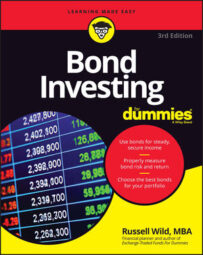Stocks and bonds come in many flavors that can be added to your portfolio. Although the world of investments offers countless opportunities — and dangers! — all investments qualify as one of these two types:
Equity: Something you own (such as stocks, real estate, or gold)
Fixed income: Money you’ve lent in return for interest (such as bonds, CDs, or money market funds), or possibly money you’ve given up in return for steady payments (annuities)
For the sake of simplicity, this article deals largely with “stocks” and “bonds,” ignoring the many shades of gray that define both of these large umbrella terms. We also ignore other forms of fixed income, such as annuities, and other forms of equity, such as real estate and commodities.
Bonds of many flavors
If the point of investing in bonds is to smooth out the returns of a portfolio that also includes stocks (Yes! That is the point!), it makes sense to have bonds that tend to zig when stocks zag. By and large, you’re looking at Treasuries, including Treasury Inflation-Protected Securities, corporate investment-grade bonds, or agency bonds.
If you’re in the higher tax brackets and have limited space in your retirement accounts, you may consider municipal bonds. If you have a very large bond portfolio, you may consider a smattering of international bonds.
High-yield bonds may also play a role in your portfolio, along with other forms of more exotic bonds, but they need to be added with some finesse. As alluring as high-yield bonds can be, they don’t offer the same diversifying power as do quality bonds. When stocks sink, high-yield bonds tend to sink as well, for the very same reason: Companies are closing doors.
Don’t be a “yield-chaser”! Higher returning bonds always carry more risk. Whatever your choice in bonds, it’s best to seek some diversification: different issuers, different maturities.
Stocks of all sizes and sorts
Because stocks can be so volatile, you must diversify. The best way to diversify is with low-cost, no-load mutual funds (index funds are often best) or exchange-traded funds (almost all of which are index funds).
Just as stocks and bonds tend to correlate poorly, different kinds of stocks and different kinds of bonds have limited correlation. That’s especially true on the stock side of the portfolio. Smart investors make sure to have domestic and foreign stocks, stocks in large companies and small companies, and growth and value stocks.
Growth stocks are stocks in fast-moving companies in fast-moving industries, such as technology. Value stocks are stocks in companies that have less growth potential; you may be able to get these stocks on the cheap, at times making them better investments than growth stocks.
Just as you get more bang for your buck but also more bounce with stocks versus bonds, you also get more potential return and additional risk with small-company stocks versus large-company stocks.
Although international stocks aren’t any more volatile than U.S. stocks, per se, differences in exchange rates can make them much more volatile to U.S. investors. The greater your tolerance for risk, the more small-company stocks and the more international stocks you may want to incorporate.
After your portfolio grows and you have all the broad asset classes covered, you may consider branching out into narrower (but not too narrow) kinds of investments. Possibilities include certain industry sectors, especially those that tend to have limited correlation to the market at large, such as real estate, timber, and energy.
Beyond that, you may consider holdings in commodities, such as precious metals. And beyond that, perhaps think about certain high-yield bonds that offer the potential for stock-like growth.
Other fixed income: Annuities
For some people, sticking an annuity on the fixed-income side of the portfolio makes sense. When you purchase an annuity, you typically surrender your principal to the annuity issuer.
You then receive cash at regular intervals at a rate of return that’s (sort of) considerably higher than you receive by buying a Treasury or municipal bond. (“Sort of” because part of the “return” is actually your own money being given back to you. It’s complicated.)
We’re not talking about variable annuities, most of which are pretty terrible investment products sold by people who make outrageous commissions and conveniently forget to mention that most of the money you’ll be seeing is your own money being returned to you.
Rather, we’re talking about fixed annuities. The difference? With a variable annuity, you receive payments that are largely based on the performance of some piece of the market, such as the S&P 500 or another stock index.
A fixed annuity gives you a certain fixed amount of income (which may be inflation-adjusted) at fixed intervals. Your payments are not contingent on the performance of the markets or anything else. And the interest earned may be tax-deferred.
With either kind of annuity, the rate of return usually is largely determined by your age. The fewer years the annuity provider thinks he’ll be sending you checks, the more generous he’ll be with his payments.

